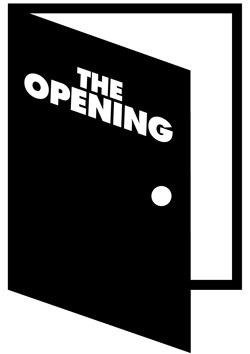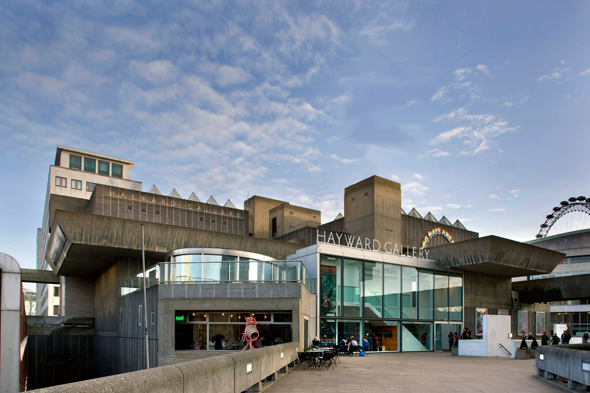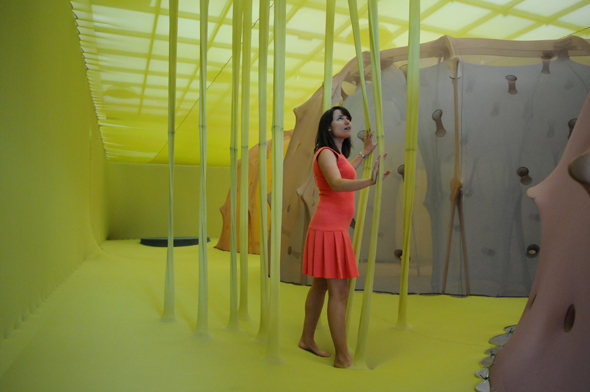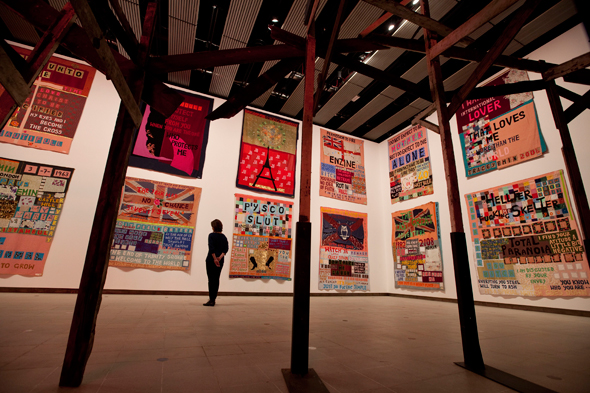
|
THE OPENING is all about introducing the fascinating, quirky and wonderful people working in and around the visual arts in Vancouver. Each week, we'll feature an artist, collective, curator or administrator to delve deep into who and what makes art happen! |
Originally hailing from Vancouver, Dr. Cliff Lauson is now Curator at the Hayward Gallery at Southbank Centre in London, UK. A graduate of UBC and formerly the Education and Public Programmes Coordinator at the Museum of Anthropology (1998-2003), Lauson completed his MA in 2004 and Phd in 2009 on the History of Art at University College London. Previous to his position at the Hayward he was Assistant Curator at Tate from 2005-09. While living and working in London, he is still very much engaged in what is happening in Vancouver, having written his dissertation on the so-called 'Vancouver School,' and worked with and written about Ron Terada. He is currently curating an upcoming Hayward Gallery exhibit with David Shrigley, and writing about Vancouver-based Damian Moppett for the upcoming Rennie Collection exhibition catalogue. Lauson will be giving a lecture at Emily Carr University next Wednesday, November 23 at 7pm.

Hayward Gallery, Southbank Centre (Photo copyright Morley von Sternberg)
How did you become interested in art?
I became interested in art during an exchange year at the University of Glasgow while I was completing my BA degree at UBC. I took my first history of art classes there and was particularly taken with Surrealism. At the end of the year, like many North Americans, I spent the summer backpacking across Europe and I tried to find as many of the works that I had studied to see them first-hand, including the Scrovegni chapel in Padua and large-scale paintings by Jacques-Louis David at the Louvre in Paris, in addition to many paintings by René Magritte.
What were your early impressions of the Vancouver art community while you still lived here?
Growing up in Vancouver, I didn’t pay much attention to the Vancouver art scene, except for the occasional blockbuster exhibition at the Vancouver Art Gallery. Like many non-artworld Vancouverites, I was not aware of the impact that Vancouver-based artists had (and continue to have) internationally. Upon returning to Vancouver to finish my BA, I started to follow art in Vancouver more closely. My entry into art and curating however came via my job as the Public Programmes Coordinator at the UBC Museum of Anthropology. The museum studies programme that was established by the late Michael Ames had developed a world-class reputation, and it made the museum a brilliant learning environment even though I was not studying in the Anthropology department.
Why did you decide to leave Vancouver and continue your education in London?
I moved to London because it is an art capital and I wanted to study in place where I could be surrounded by a wealth of artists, exhibitions, and galleries. Its proximity to Europe made it a more appealing city to me than New York. In terms of studying, I found that the emphasis on independent research and frequent teaching in galleries were ways of learning that really appealed to me.
You have been a Curator at Hayward Gallery in London since 2009 - can you tell me a bit about your role there and what projects you have upcoming? Tell me also about the space you are working with and any particular challenges or benefits that it presents.
As Curator I research, develop, and organize exhibitions with primarily, though not exclusively, contemporary artists. The Hayward Gallery is one of the few purpose-built public art galleries in London and is quite large compared to other institutions. Its configuration is essentially the same as it was when it opened in 1968 – five interior galleries and three sculpture courts. Three of the inside spaces are fairly cavernous, so can be quite flexible but one always has to ensure that an artist’s work is presented at its best in those spaces. I am currently preparing an exhibition of work by British artist David Shrigley which will run from 1 February – 13 May 2012. He is best-known for his humorous drawings, but he makes artwork across a variety of media – all are very funny.

Ernesto Neto 'The Edges of the World' at the Hayward Gallery (2010)
Has your impression of Vancouver's art community changed now that you are involved in a larger community in London?
Studying in London really allowed me to see Vancouver’s art and artists from the outside and to realise their importance – so much so that after completing my MA, I wrote my PhD on the so-called Vancouver School. Vancouverites sometimes think this is crazy or tedious, I suppose because they live and breathe Vancouver art, but the rest of the world continues to be interested in finding out about what makes the city such an artistically productive environment.
You've worked at a major Vancouver institution and two major British institutions - why institutions over alternative spaces? Have you found a difference working in British institutions versus your experience at MOA?
I continue to enjoy the scale and mix of contemporary and historical research that exhibition making at large institutions entails. It’s rather difficult to make generalizations, but my personal experience has been that because British institutions exist within a long-established artistic tradition, they are very rich repositories of knowledge and experience, but they also need to work very hard to continue to innovate and lead. I like the fact that the national museums in England offer free admission to everyone, especially in light of recent funding cutbacks.
Having curated exhibitions with such disparate artists as Ernesto Neto and Tracey Emin, can you tell me a bit about how how you approach each exhibition or project?
With an open mind! The approach to each exhibition is indeed different and depends upon the nature of the artwork and the working methods of the artist. Some shows require more historical research while others present technical challenges, and everything in between. Contemporary art is hugely varied and this dynamism is what keeps it stimulating and exciting for me.

Tracey Emin 'Love is What You Want' at the Hayward Gallery (Photo: David Levene)
Let’s talk about the major Tracey Emin exhibition you recently curated. Did you work a lot with her in the creation of the exhibition? How was it curating and displaying the intimate details of someone's life in a public space?
Tracey Emin: Love Is What You Want was essentially a three-way collaboration between myself, Ralph Rugoff, Hayward Director and co-curator, and the artist. Tracey very much wanted to be involved – this was the most comprehensive show of her work to date – and we were grateful for her input. One of the key ideas of the exhibition was to show that although almost all of Tracey's work comes directly from her life experience, these stories always undergo a process of editing, filtering and crafting in becoming an artwork. Her work is intimate and compelling, but her real strength lies with the ways in which she tells those stories, which range from almost documentary-like in her early career to more abstractly in recent work.
What artists are you watching or interested in right now?
Too many to name. Our exhibitions programme and my research interests are very diverse, so I'm as happy to be looking at work by an emerging artist as I am an early modern painting.
All images courtesy the Hayward Gallery at Southbank Centre


